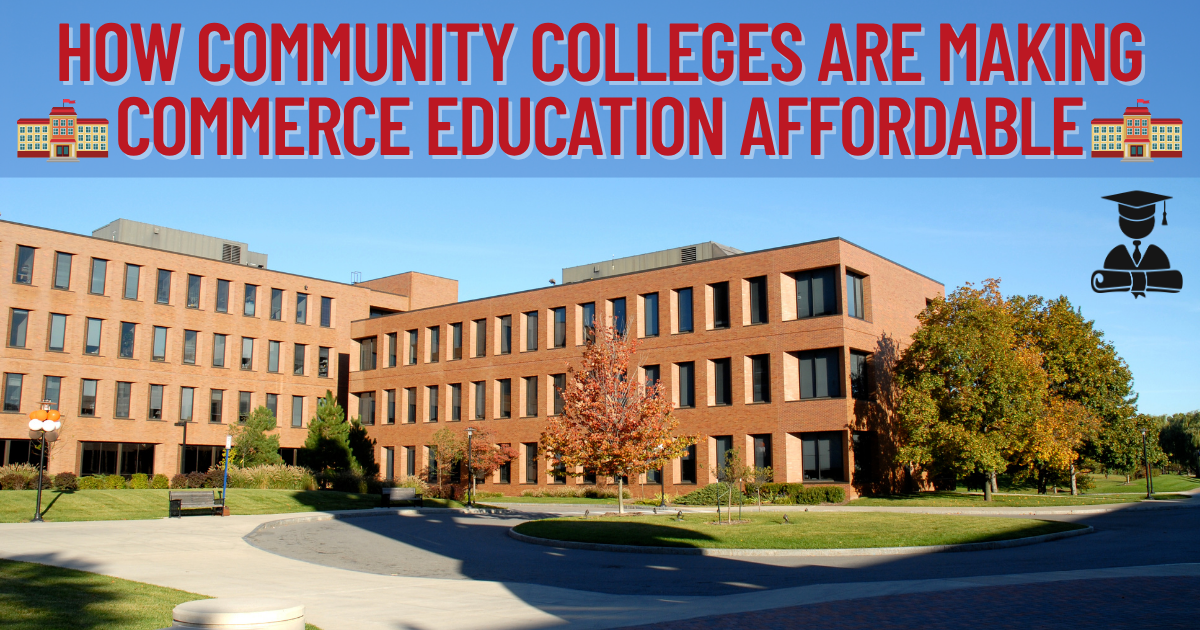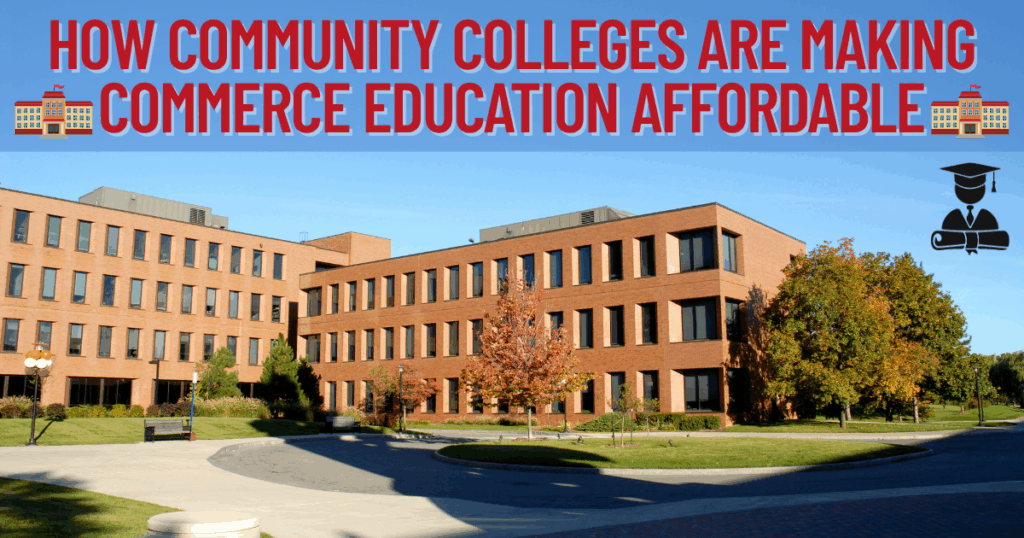How Community Colleges Are Making Commerce Education Affordable. Community Colleges and universities throughout the U.S. face a variety of risks impacting student success and their overall monetary sustainability, including several challenges pertaining to affordability and the return on investment (ROI) from the degrees and programs offered by the institution. Community colleges are key drivers of economic mobility, employment, and community dynamism. To know more about the topic “How Community Colleges Are Making Commerce Education Affordable,” read the complete article.
How Community Colleges Are Making Commerce Education Affordable
Public community colleges are a uniquely American educational model that was designed to guarantee access to affordable, high-quality higher education for all people. In fact, nearly one-third of all undergraduate students attend a public two-year college. They are the main educators of nursing and other healthcare professionals—among many other professions—and are vital engines in a community for highly skilled and trained employees for in-demand careers. Public community colleges provide advanced learning to students with the fewest resources and the greatest obstacles and often serve the most demographically and socioeconomically diverse students.

In a speech in June 2023, first lady Jill Biden, who teaches at Northern Virginia Community College, called community colleges “the best-kept secret in America.” She cited stories of two-year students who were making starting salaries of $25 an hour and $50,000 a year. Those students are among the 10.2 million enrolled at community colleges, according to the American Association of Community Colleges. They account for 41% of all undergraduates, according to the Community College Research Center.
Advantages of Community Colleges
Lower Tuition Fees
One of the major benefits of community college is its lower tuition fees compared to four-year universities. According to College Board, the average cost of tuition and fees for a public two-year college in 2021-2022 was $3,770, compared to $10,560 for in-state students at public four-year colleges and universities. Going to a community college can save you thousands of dollars in tuition fees alone, making it an outstanding choice for students who are looking to save money.
Work-based and Experiential Learning Opportunities
Work-based learning programs are an important tool for students. creating opportunities for them to build relationships in their desired industries and gain hands-on experiences via apprenticeships, internships, and other on-the-job training opportunities. By aligning classroom teaching with real-world experiences and allowing students to enter the workforce with competence and confidence.
Smooth Transfer to Traditional Universities
Many community colleges have signed transfer agreements with four-year universities. These agreements, often called “articulation agreements” or “transfer pathways,” enable students to transfer their community college credits towards a bachelor’s degree at a four-year institution. This effortless transfer process ensures students can pursue their desired degree without losing valuable time or repeating coursework.
Building a Strong Academic Foundation
Community colleges provide a wide range of general education courses that are typically needed for a four-year degree. By completing these courses at a community college, students can build a strong academic foundation in subjects such as English, Mathematics, and Science.
Challenges Faced by Community Colleges
The main economic challenge for community colleges is having limited control over both their costs and their funding. On the cost side, open admission policies required them to take everyone who desired to enroll. Enrollment and costs can fluctuate by 5% or more from one year to the next, making budgeting difficult. “If their enrollment is up this year, they’ll count it in the formula for next year,” she says. “The trouble is, they need the money now.”
Compounding the problem is that they serve three missions, but the funding emphasis is not equal on all three. They serve:
- Students seeking associate degrees or professional certificates to go directly into the workforce
- Students taking credits they can transfer to a four-year college
- Students taking noncredit classes for personal growth
Unfortunately, state and local governments often base funding formulas more heavily on the number of degrees and certificates granted. That’s a formula for underfunding, says Vamosiu. “How many people got an associate degree or a certificate is not a good representation of the costs of these institutions,” she says. “Looking at the total enrollment of these institutions is probably far more relevant. If you think of the costs, whether someone’s getting a degree or not, you still have to keep all their registrar data and other records. They’re still going to use tutoring services.








